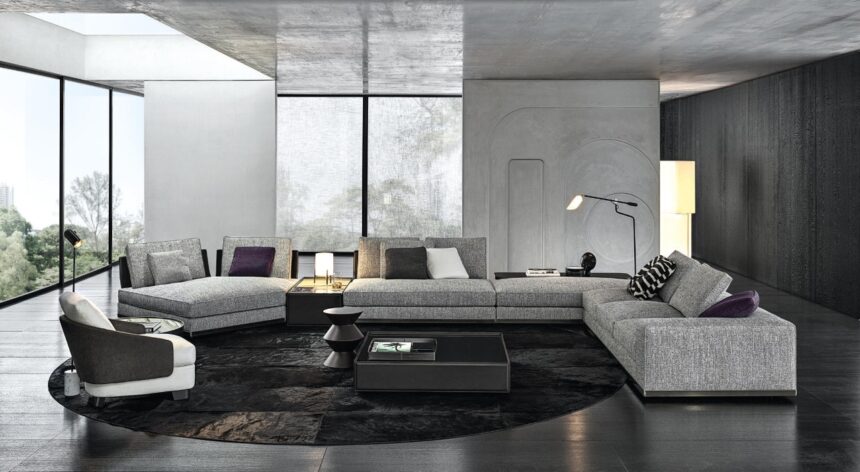Creating a harmonious interior where art and furniture complement each other can transform any living space into a cohesive, aesthetically pleasing environment. The key lies in achieving a balance that allows each element to shine without one overshadowing the other. Here are some expert tips to help you navigate this delicate balance and curate a beautiful, well-integrated home.
Understanding Your Space
Before you start selecting art and furniture, it’s essential to understand the space you’re working with. Consider the size, shape, and natural lighting of the room. Large, open spaces can handle bold, oversized artwork and substantial furniture pieces, whereas smaller rooms may require a more restrained approach. Take note of architectural features like windows, doors, and fireplaces, as these can serve as natural focal points or dictate the placement of furniture and art.
Establishing a Theme
One effective way to ensure harmony is to establish a theme or a cohesive style for your interior. This could be based on a specific color palette, design era (such as mid-century modern or contemporary), or a particular mood you wish to evoke (like serene and minimalist or vibrant and eclectic). Once you have a clear vision, you can select furniture and artwork that align with this theme. For instance, a minimalist space might feature sleek, simple furniture paired with abstract or monochromatic art pieces.
Balancing Color and Texture
Color plays a crucial role in creating harmony. Aim for a complementary color scheme where the hues in your furniture and artwork either match or contrast in a pleasing way. For example, if your furniture is in neutral tones, you can add pops of color through your art pieces. Conversely, if your furniture is colorful, opt for more subdued, neutral art. Texture is another important aspect; mixing different textures can add depth and interest to a room. A smooth leather sofa can be paired with a rough, textured canvas, creating a dynamic visual contrast.
Highlighting with Lighting
Proper lighting can enhance both your art and furniture, making them stand out and creating a balanced atmosphere. Use a mix of ambient, task, and accent lighting to highlight key pieces. Picture lights, track lighting, or wall sconces can be used to illuminate artwork, ensuring it becomes a focal point. At the same time, floor lamps, table lamps, and overhead fixtures can accentuate furniture pieces and create a warm, inviting glow throughout the room.
Integrating Art with Furniture Placement
When arranging your furniture, consider the placement of your art. Art should be at eye level to be appreciated fully, and this often means positioning it in relation to your furniture. For instance, a large painting or a collection of smaller artworks can be centered above a sofa or a console table, creating a cohesive vignette. Ensure there is enough space between your art and furniture to allow each piece to breathe and be appreciated individually.
For inspiration, you might explore works from famous artists and collections. These can provide valuable insights into how art and furniture have been successfully integrated in various styles and settings.
Creating Focal Points
Every room should have a focal point, whether it’s a piece of art, a piece of furniture, or an architectural feature. Once you’ve identified your focal point, arrange your furniture and art around it. For example, if you have a stunning piece of art, make it the centerpiece of your room and arrange your seating to face it. Alternatively, a beautiful sofa or an ornate fireplace can serve as the focal point, with art pieces chosen to complement and enhance it.
Layering and Grouping Artworks
Don’t be afraid to layer and group artworks to create visual interest. Gallery walls, where multiple pieces are arranged together, can make a significant impact. When grouping artworks, consider their colors, frames, and sizes to ensure they work together harmoniously. Mixing frames and art styles can add an eclectic touch, but aim for a common thread, such as a color palette or theme, to maintain cohesion.
Paying Attention to Scale
Scale is vital in achieving balance. Large furniture pieces paired with tiny artworks can look mismatched and vice versa. Ensure that the size of your artwork corresponds with the size of your furniture and the wall space. For example, a large sectional sofa might require a substantial piece of art above it to balance the scale, while a small chair or side table could be accompanied by a smaller, more delicate piece.
Personalizing Your Space
Ultimately, your home should reflect your personality and tastes. Don’t be afraid to infuse your space with personal touches, whether it’s through family photos, travel souvenirs, or DIY art projects. Personal elements can add character and make your space feel uniquely yours. When combined thoughtfully with your chosen art and furniture, these personal touches can contribute to a harmonious and inviting home environment.
Conclusion
Balancing art and furniture in your interior design requires a thoughtful approach that considers color, texture, scale, and lighting. By understanding your space, establishing a theme, and paying attention to these elements, you can create a harmonious interior that is both beautiful and functional. Remember, the goal is to allow both your art and furniture to complement each other, creating a cohesive look that enhances the overall aesthetic of your home. With these tips in mind, you’ll be well on your way to curating a space that feels balanced, harmonious, and truly reflective of your style.






